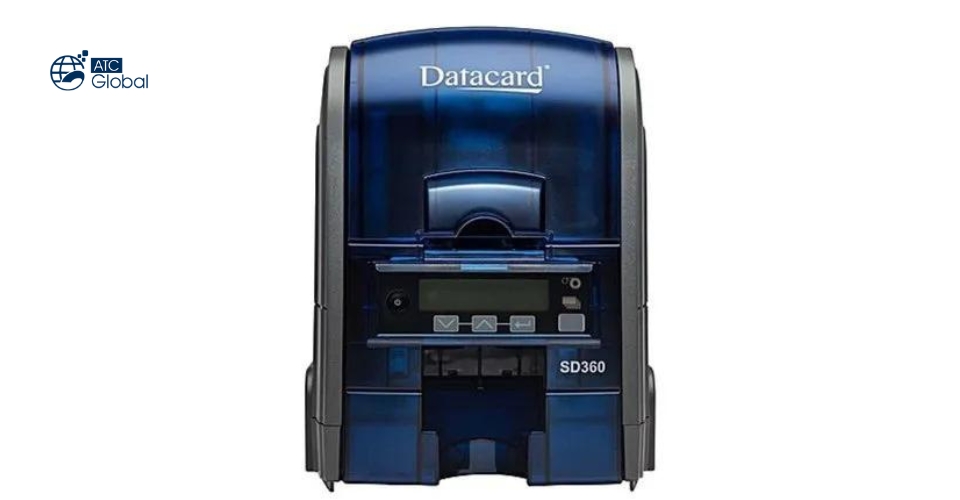PVC Card Printers: A Comprehensive Guide to Different Types Leave a comment
PVC card printers play a crucial role in various industries, from identification and access control to membership and loyalty programs. These printers allow organizations to create high-quality, durable plastic cards customized with logos, text, images, and security features. In this article, we’ll delve into the different types of PVC card printers available on the market, their features, and their applications.
Understanding PVC Card Printers
1. Direct-to-Card (DTC) Printers
Direct-to-Card (DTC) printers are the most common type of PVC card printer, known for their reliability and versatility. These printers use dye-sublimation or thermal transfer technology to print images and text directly onto the surface of the card. DTC printers are ideal for applications such as employee ID badges, membership cards, and access control cards.
2. Retransfer Printers
Retransfer printers are advanced PVC card printers that offer superior print quality and durability compared to DTC printers. Instead of printing directly onto the card, retransfer printers transfer the image onto a separate film, which is then bonded to the card surface using heat and pressure. Retransfer printers are ideal for applications that require high-resolution printing, such as government IDs, driver’s licenses, and smart cards.
Types of PVC Card Printers
1. Entry-Level Printers
Entry-level PVC card printers are designed for small businesses, organizations, and individuals with basic card printing needs. These printers offer essential features such as single-sided printing, manual card feeding, and basic image and text customization. Entry-level printers are affordable, easy to use, and suitable for low-volume card printing applications.
2. Mid-Range Printers
Mid-range PVC card printers are suitable for medium-sized businesses, schools, and government agencies with moderate card printing requirements. These printers offer advanced features such as dual-sided printing, automatic card feeding, and enhanced image and text customization options. Mid-range printers are versatile, reliable, and capable of handling higher volumes of card printing.
3. High-End Printers
High-end PVC card printers are designed for large enterprises, financial institutions, and security-conscious organizations with demanding card printing needs. These printers offer advanced features such as dual-sided printing, high-speed printing, encoding capabilities, and advanced security features such as UV printing and holographic overlays. High-end printers are built for durability, performance, and scalability to meet the most stringent card printing requirements.
Applications of PVC Card Printers
1. Identification Cards
PVC card printers are commonly used to create identification cards for employees, students, and members of organizations. These cards typically include personal information, a photo, and security features such as barcodes or magnetic stripes for access control and authentication purposes.
2. Access Control Cards
Access control cards, also known as proximity cards or key cards, are used to grant access to secure areas within buildings or facilities. PVC card printers can print access control cards with embedded RFID or NFC technology, allowing users to tap or swipe their cards to gain entry.
3. Loyalty and Membership Cards
Loyalty and membership cards are used by businesses to reward customers for their loyalty and encourage repeat business. PVC card printers can create customized loyalty and membership cards with unique designs, barcodes, or QR codes to track purchases and redeem rewards.
Choosing the Right PVC Card Printer
1. Consider Your Printing Needs
When choosing a PVC card printer, consider your printing needs, including volume, card type, and desired features. Determine whether you need a basic entry-level printer for occasional printing or a high-end printer for high-volume, high-security applications.
2. Evaluate Features and Specifications
Evaluate the features and specifications of different PVC card printers, including printing resolution, printing speed, encoding capabilities, and security features. Choose a printer that offers the right balance of features and performance to meet your specific requirements.
3. Assess Total Cost of Ownership
Consider the total cost of ownership, including upfront costs, ongoing maintenance, and consumables such as ribbons and cards. Factor in the long-term value and return on investment when selecting a PVC card printer for your organization.
In conclusion, PVC card printers come in a variety of types and configurations to suit different printing needs and applications. Whether you’re a small business, a school, or a large enterprise, there’s a PVC card printer available to meet your requirements. By understanding the different types of PVC card printers, their features, and their applications, you can make an informed decision and choose the right printer for your organization’s card printing needs. So whether you’re printing employee ID badges, access control cards, or loyalty cards, invest in a quality PVC card printer to create professional-looking cards that meet your organization’s needs and standards.

